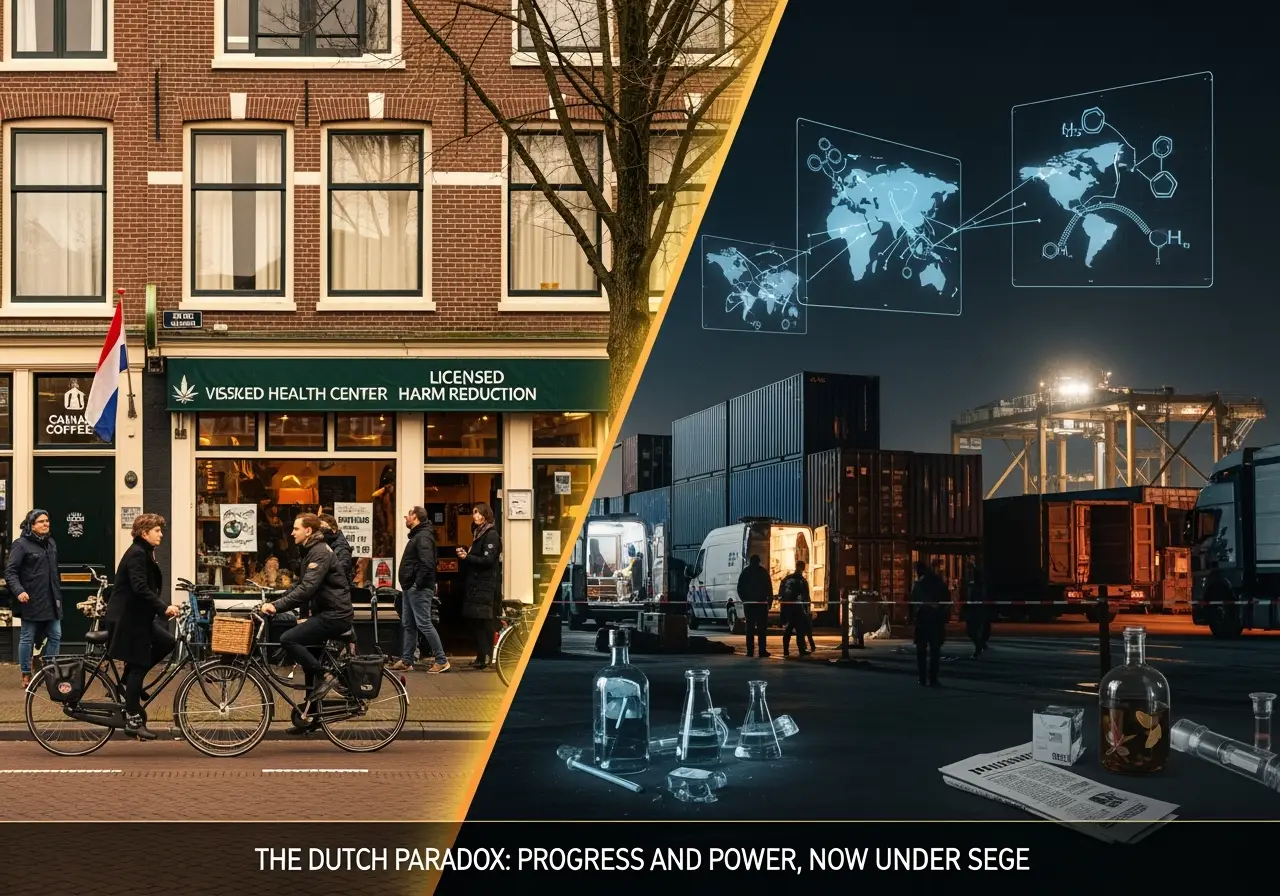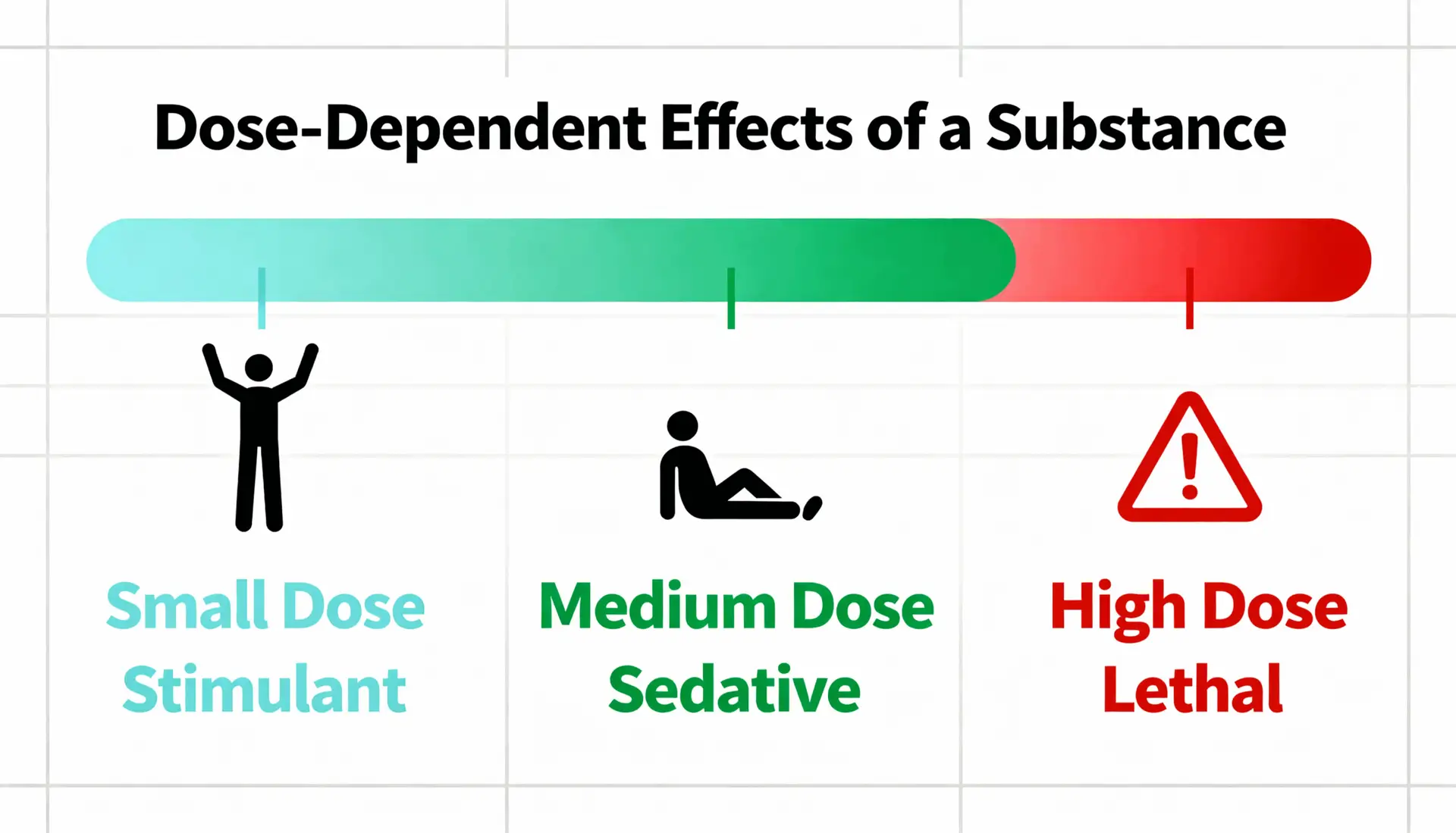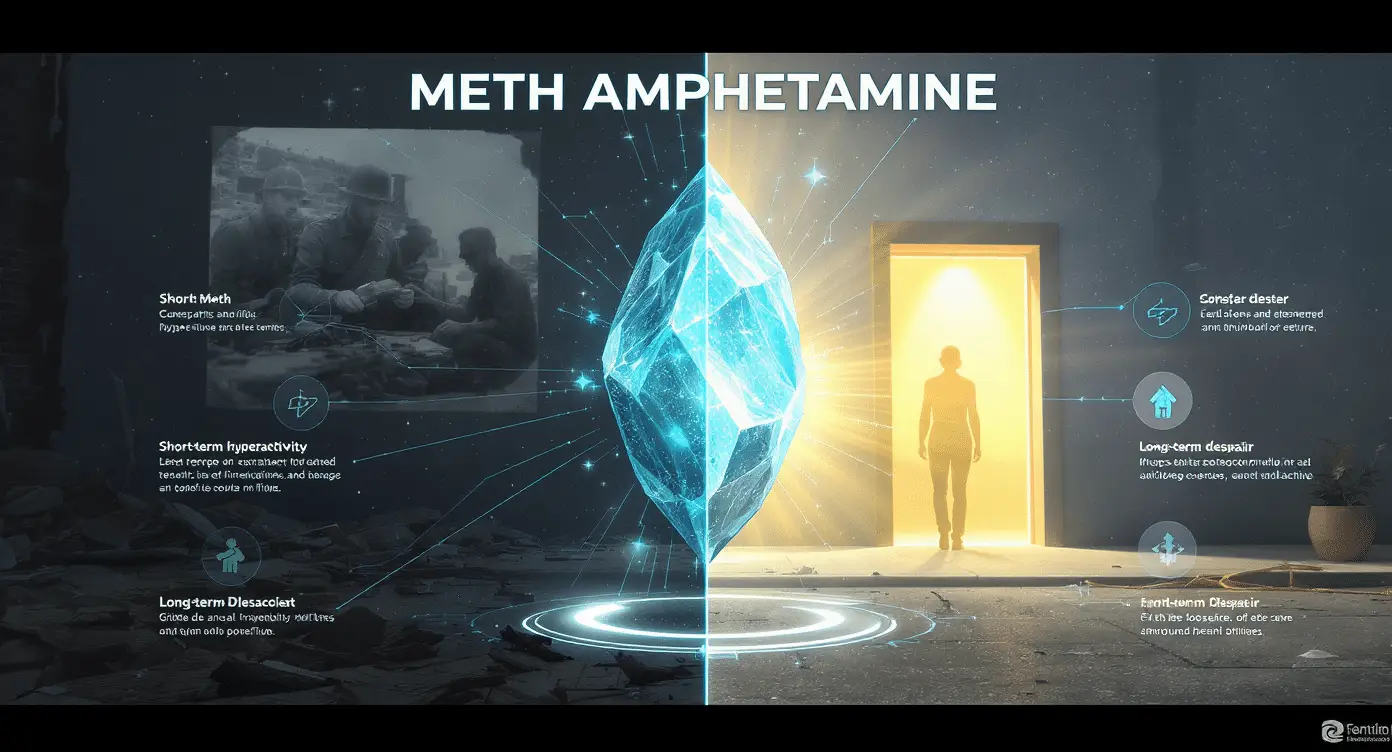A Crisis Behind the Image of Tolerance
The Dutch drug crisis reveals a growing contradiction. On the surface, the Netherlands appears to be a global model for progressive drug policy. It boasts regulated cannabis sales, harm reduction programs, and low overdose rates. However, beneath this progressive façade, a darker reality has emerged. The country is now a global hub for drug trafficking, synthetic production, and brutal narco-violence.
The Coffee Shop Paradox: From Policy to Crime
For decades, Dutch cannabis policy allowed coffee shops to sell marijuana (the “front door”) while prohibiting legal wholesale supply (the “back door”). Consequently, this inconsistency created space for organized crime to flourish.
To address this issue, the government launched the Closed Coffee Shop Chain Experiment in 2025. This initiative licenses approved growers to supply cannabis legally. Although promising, the program highlights how complex it is to separate legal retail from criminal wholesale networks.
Cocaine at the Gate: Rotterdam’s Drug Flood
Rotterdam has become a key battleground in the Dutch drug crisis. In 2023 alone, authorities seized 59 tonnes of cocaine at the port. Nevertheless, this likely represents only a small fraction of what passes through undetected.
Criminal groups like the Mocro Maffia have used these profits to expand their reach and their violence. Indeed, this is no longer just a smuggling issue. High-profile assassinations of a lawyer and a journalist shocked the nation. As a result, narco-terrorism now threatens Dutch democracy itself.
🔗 European Monitoring Centre for Drugs and Drug Addiction – Country Overview
Synthetic Drug Production: A Hidden Industry
Besides trafficking, the Netherlands is also Europe’s top producer of synthetic drugs. In 2023, authorities shut down 32 MDMA labs. Moreover, crystal meth labs are on the rise.
This massive production causes two major issues. Firstly, it fuels youth drug culture across Europe. Secondly, it generates toxic chemical waste. For every kilogram of MDMA, 58 kg of waste are dumped—often illegally into forests, fields, and rivers. This makes the Dutch drug crisis not just a criminal threat, but also an environmental one.
Measuring the Human Cost Differently
Unlike in other nations, overdose deaths in the Netherlands remain relatively low—around 300 in 2022. This success comes from longstanding harm reduction strategies, such as safe consumption rooms and heroin-assisted therapy.
However, the human cost of the Dutch drug crisis is more insidious. It is seen in:
- The rise in assassinations and public fear
- Widespread corruption in logistics sectors
- Normalization of cocaine and MDMA use among youth
- Communities that feel unsafe and helpless
🔗 Also read: The Nordic Drug Crisis – Sweden & Finland
Reclaiming the Future from the Dutch Drug Crisis
Ultimately, the Netherlands must confront this reality. Although harm reduction is vital, it cannot defeat criminal networks alone. Therefore, stronger law enforcement and prevention are needed. But more importantly, the demand for drugs must decrease.
This is where the Narconon program offers lasting change. It does not rely on substitutes. Instead, it offers:
- A drug-free detox to eliminate residues
- Comprehensive life skills training
- Ethical rebuilding to help people live productive, crime-free lives
By helping people recover fully, Narconon removes fuel from the criminal machine. It offers a real solution to the Dutch drug crisis—one person at a time.
➡️ To learn more about our full drug-free rehabilitation approach, visit Narconon Europe’s official website.
Sources:
- European Monitoring Centre for Drugs and Drug Addiction (EUDA) / European Drug Report
- Trimbos Institute (Netherlands Institute of Mental Health and Addiction)
- Dutch National Police and Government Reports
- Data synthesized from national and European reports on the drug situation.



